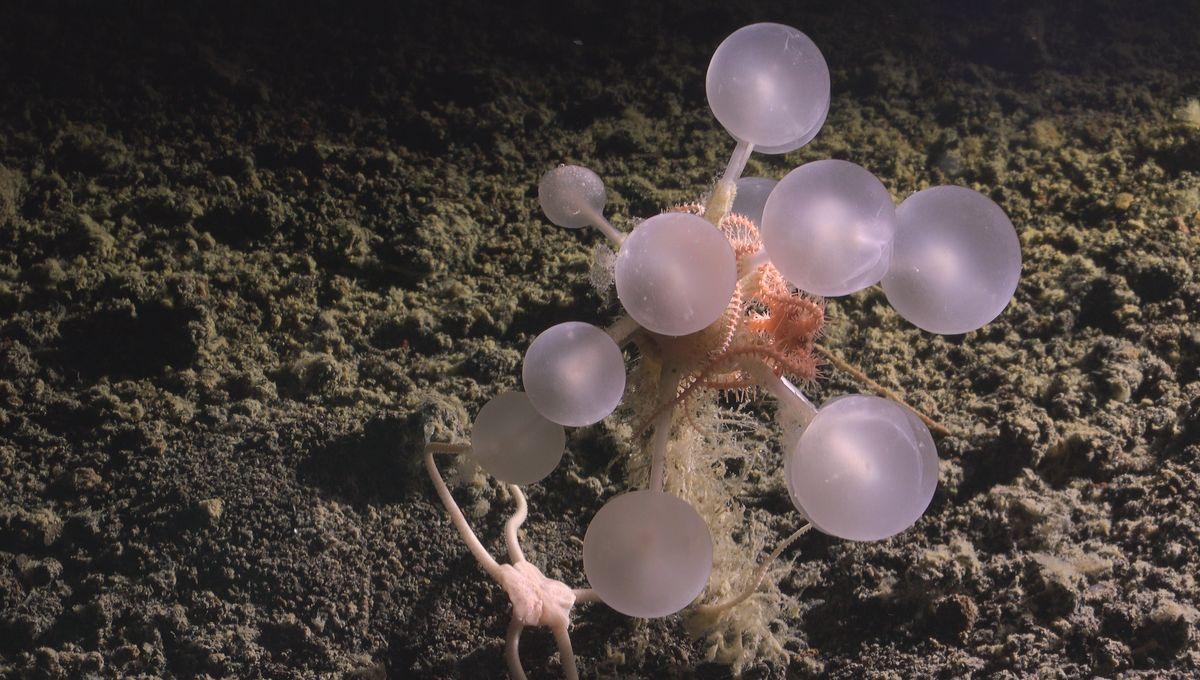-
Feed de notícias
- EXPLORAR
-
Páginas
-
Blogs
-
Fóruns
Carnivorous "Death-Ball" Sponge Among 30 New Deep-Sea Weirdos Discovered In The Southern Ocean

Carnivorous "Death-Ball" Sponge Among 30 New Deep-Sea Weirdos Discovered In The Southern Ocean
There's always a lot going on in the deep ocean, but anyone who had “carnivorous 'death-ball' sponge” on their bingo card for 2025 deserves to win the prize. It's one of 30 new species discovered by researchers exploring the deep dark depths of the Southern Ocean, some of them pretty peculiar – even for the deep-sea.
The rest of this article is behind a paywall. Please sign in or subscribe to access the full content. The Nippon Foundation–Nekton Ocean Census confirmed the previously unknown deep-sea weirdos as new species following two cruises to explore the area. The most surprising of these new creatures is a species of sponge in the Chondrocladia genus, which, rather than calmly filter feeding on the seafloor, has chosen violence. The sponge was discovered at 3,601 meters (11,814 feet) deep at the Trench North dive site, east of Montagu Island, and is covered in small, clear ping-pong-like balls complete with tiny hooks to trap prey. When we said carnivorous “death-ball” sponge, we weren’t kidding. The team behind the discoveries used underwater ROV SuBastian to survey volcanic calderas, the South Sandwich Trench, and the seafloor around two of the South Sandwich Islands, Montagu Island and Saunders Island. This yielded nearly 2,000 specimens in 14 different animal groups, though there's still plenty left to be found. “The Southern Ocean remains profoundly under-sampled. To date, we have only assessed under 30% of the samples collected from this expedition, so confirming 30 new species already shows how much biodiversity is still undocumented,” said Dr Michelle Taylor, Head of Science at The Nippon Foundation-Nekton Ocean Census, in a statement. During the research cruises, a new species of scale worm with an iridescent shine was also discovered, seen at more than 2,700 meters (8,858 feet) deep. The team also found new species of sea pens too – including one that wouldn’t look out of place on Taylor Swift’s new album – as well as sea stars and black corals. The team even filmed the first-ever footage of a juvenile colossal squid. They'd better nickname this thing the Showgirl worm. Image credit: Paul Satchell/The Nippon Foundation-Nekton Ocean Census/Schmidt Ocean Institute © 2025 Along with the new species seen by the team were some old favorites, like zombie worms. These freaky creatures have no mouths and rely on a symbiotic relationship with bacteria to break down fats found in carcasses on the ocean floor to survive. An expedition also explored a new area of the seabed after the iceberg A-84 calved from the George VI ice shelf earlier this year. This made the investigation the first to observe an area previously sealed underneath roughly 150 meters (492 feet) of ice. The Nippon Foundation–Nekton Ocean Census has a goal of finding 100,000 new ocean species of 1 to 2 million suspected to be living in the ocean. “Accelerating species discovery is not a scientific luxury, it is essential for public good,” said Mr Mitsuyuki Unno, Executive Director of The Nippon Foundation, who leads Ocean Census with the Nekton Foundation. “Ocean Census is a program with the goal to reveal the unknowns of our world. Through its expeditions, we have seen another groundbreaking species discovery that benefits the world’s scientists, policymakers and communities.”


